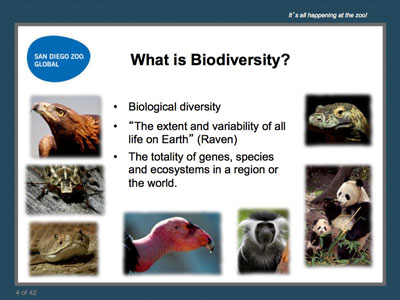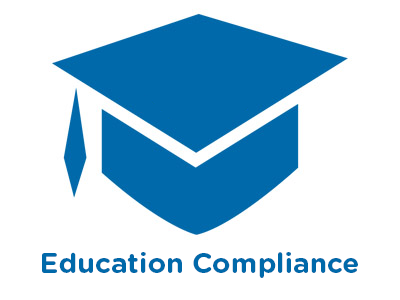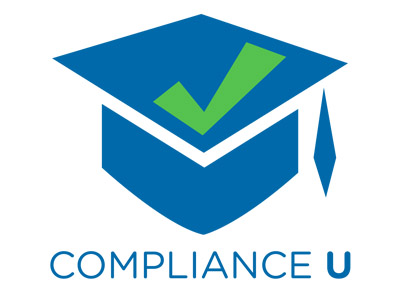 |
The Role of Staff in Behavior Guidance: Middle and High School Students |
2.00 |
Guiding and managing the behavior of youth are some of the biggest challenges that out-of-school time program staff face.
By the end of this course, you will be able to:
- Understand your reactions to the behaviors of children and youth, and learn to use this information to respond more effectively.
- Learn to use behavior guidance strategies at the appropriate time. |
 |
The Role of the Site Leader |
2.00 |
Supervising adults is challenging under any circumstances, but in out-of-school time, supervision can be even more challenging because those supervised needs to be independent workers who are creative, energetic, enthusiastic and calculated risk takers. The afterschool site leader must have an arsenal of skills and strategies to be both a leader and a supervisor. This course offers a basic overview of the roles and responsibilities of the site leader or supervisor and how those roles support a culture of team excellence and mutual support. |
 |
The Safe Food Handler |
0.50 |
This course covers how food workers introduce germs, bacteria, and viruses into the workplace. Furthermore, this course covers methods for abating foodborne illnesses in the workplace and keeping the transmission of foodborne illnesses low. This information is based on the Food and Drug Administration's 2022 Food Code. |
 |
The Science Supporting Breeding and Transfer Plans |
2.50 |
This course is intended to provide participants with a broad understanding of why and how animal breeding and transfer recommendations are made for cooperative breeding programs. This course is appropriate for animal care staff involved in management and collection planning at zoos and aquariums. |
 |
The Six Ps of Marketing School-Age Programs |
2.00 |
Effective marketing of school-age programs is a systematic process that involves research, analysis, assessment of market trends and needs, short-term and long-term planning, and development of effective strategies to promote school-age program services and develop a positive image of the program in the community. It is important for school-age care leaders to recognize that marketing is a far reaching process that includes, but is not limited to, advertising and publicity. When leaders take a comprehensive approach to marketing, their programs and projects have an excellent chance of success. Knowledge and understanding of the marketing process is an invaluable tool for leaders as they plan and implement new programs and projects, assess the stability and need for improvement of current programs, develop plans for new or expanded programs, and develop a positive public image of the program and its services. |
 |
The Stages of Community—How to Create Effective Group Dynamics in the Workplace |
1.00 |
We may not be uniform—in race, politics, gender, generation, etc.—but we can be unified in love and service. This is how we get there: Stage One is Psuedo-community. Relationships are a half an inch deep and fake. We pretend we all get along, but we really can’t stand each other. Stage Two is Chaos. We quit pretending that we like each other, we finally aired our differences, and now the battle has begun to change each other. Stage Three is Surrender. We’ve accepted that we are stuck with each other, and we’ve proven that we’ve only hurt each other in the process of trying to change each other. Finally, though, we’re willing to surrender our agenda (and all other barriers to our communication) so that we might understand one another. Now we have hope. Stage Four is Community. We still don’t agree on everything, but we’ve learned to treat each other with dignity and respect. Our campus is a relationally safe environment. We share a sense of belonging and purpose. This is the place where lives are impacted. Everyone wants to be on this campus. |
 |
The Stages of Escalation and How to Manage Them |
1.00 |
We know that the most effective learning is relationally based. The same is true when we intervene with students in crisis: the deeper we’ve established relationships with students, the more power we have to guide them to calm and safety. Crisis situations can leave a wake of difficult thoughts and feelings. Students and teachers can feel lingering shame, anger, fear and confusion for days—even weeks or months—after a traumatic event. The good news is that crisis situations do not have to be harmful to a relationship, and in fact, they can serve as a doorway to deeper trust, intimacy, and respect. |
 |
The Value of a Great Strategic Plan |
2.00 |
During this course, you'll see how a great strategic plan can help you achieve a deep understanding of your purpose, clarify your priorities, and deliver maximum mission impact - without sacrificing financial sustainability. At the end of the course, we will show how strategic planning at San Diego Zoo Global helped to transform our organization, generated impressive results, and paved the way for a better future for wildlife. |
 |
The Value of Biodiversity and its Link to Human Welfare |
1.00 |
Participants will explore the question: "What is the value of biodiversity?" We'll discuss biodiversity's value from intrinsic and utilitarian perspectives and discuss why saving Earth's species is a critically important matter for all humans. The personal link between biodiversity and human wellbeing has been demonstrated in numerous studies, a compelling body of research that we'll discuss here. Lastly we'll discuss the current plight of global biodiversity and how we can each personally help to alleviate threats. |
 |
Tigers |
2.00 |
This course will provide an introduction to tigers, including an overview of physical characteristics, habitat, behavior, reproduction and the conservation efforts dedicated to protecting this species.
|
 |
Time Management: Information Overload |
1.00 |
This course will focus on how to identify the causes of information overload and overcome it by screening information, control paperwork by organizing your office and filing system, and communicate effectively to increase productivity. |
 |
Time Management: Productivity |
0.75 |
This course will focus on how to increase productivity by controlling interruptions and meetings and recognize and overcome factors that adversely affect productivity. |
 |
Time Management: Technology and Time Management |
1.00 |
This course will focus on how to use computer and telephone technologies to save time instead of wasting time and maintain a reasonable workload by saying “no” when appropriate. |
 |
Time Management: Time Management Overview |
1.00 |
This course will focus on how to identify the benefits of time management and the relationship between personality types; evaluate your productivity by calculating the cost of your time and performing a time audit; and organize your time by creating a to-do list, identifying goals, and setting priorities. |
 |
Time Management: Time Management Plans |
1.00 |
This course will focus on how to develop a time management plan to help identify and achieve goals and organize your day by creating a daily plan and avoiding obstacles. |
 |
Title IX |
1.00 |
Title IX of the Education Amendments of 1972 prohibits sexual discrimination in educational institutions that receive federal funding. It applies to the vast majority of colleges and universities—public, private, and parochial—and has a broad scope. Under Title IX, discrimination on the basis of sex can include sexual harassment or sexual violence, such as rape, sexual assault, sexual battery, and sexual coercion. A school that fails to respond to and remedy the situation risks losing federal funding. |
 |
Title IX Guidance Changes - September 2017 |
0.17 |
In September 207, United States Department of Education Secretary Betsy DeVos rescinded Obama-era guidelines related to how colleges and universities investigate campus assaults. This course reviews the background of those changes, its criticism and responses, as well as new interim measures and timelines to make those changes. |
 |
Train-the-Trainer: Training Methods |
0.25 |
The purpose of this course is to provide the education and tools needed so that participants will be able to effectively deliver safety and health training to their workers. By the end of this course participants will be able to explain the different titles of a teacher, determine positive classroom control measures, examine diversity and stereotypes, describe training delivery methods, analyze questioning types and techniques, demonstrate the use of training aids, define how to empower the adult learner, and illustrate the proper use of assessments and critiques. |
 |
Train-the-Trainer: Training Methods (Corrections) |
0.25 |
The purpose of this course is to provide the education and tools needed so that participants will be able to effectively deliver safety and health training to their workers. By the end of this course participants will be able to explain the different titles of a teacher, determine positive classroom control measures, examine diversity and stereotypes, describe training delivery methods, analyze questioning types and techniques, demonstrate the use of training aids, define how to empower the adult learner, and illustrate the proper use of assessments and critiques. |
 |
Transition Planning: Preparing Students with IEPs for Life After High School |
1.00 |
This course covers transition planning for paraprofessionals and teachers. Transition planning is a process that supports movement from school to post-school activities for a student with a disability. It’s a set of coordinated activities focused on improving the academic and functional achievement of the student as they move into various post-secondary vocational and educational settings. |
 |
Transitioning Three Raptors to an Operant Conditioning Program |
1.00 |
This presentation will address how the application of Operant Conditioning techniques were applied to training 3 free lofted raptors for Education programs in our Wildlife Education Division (WLE) at the San Diego Zoo Safari Park. Raptors previously utilized for the WLE division have been traditionally handled and crated for travel without the use of operant conditioning and positive reinforcement. We will demonstrate the benefits of pro-active behavioral management through the application of food and weight management techniques and the use of positive reinforcement from the trainers. Additionally we will discuss how a reinforcing environment without the rehearsal of avoidance behavior or aggression leads to future success and positive relationships. |
 |
Trauma and Its Impact on Education |
1.50 |
Any professional employed in a school must understand the adverse experiences that students have can directly impact their experience in the classroom. This course dives into the definition of trauma, the impact of trauma on the brain, and how trauma can manifest in the classroom. It is important to know how to help students who have experienced trauma in their lives. This course will also touch on the importance of self-care for professionals who work with students who have experienced trauma. This course will help you develop new knowledge about students and help you understand your role as an educational professional.
Trauma and Its Impact on Education is the first course in a series of two trauma courses. After this course, be sure to check out Trauma-Informed Practices. |
 |
Trauma-Informed Practices |
1.00 |
This course contains an overview of trauma: what it is, how to manage it, and what it looks like for students; a list of trauma-informed practices; and ways to ensure that you are implementing data-driven trauma-informed practices.
Trauma-Informed Practices is just one out of two courses in our trauma series. Be sure to check out the other course, Trauma and Its Impact on Education. |
 |
Trust-Based Animal Training - Elephants |
2.00 |
Managing elephants with a trust-based system in a way that helps to protect animal care staff from injury is the trend among accredited zoological organizations. This program offers the experience and expertise of San Diego Zoo Global animal behavior experts who have used this method for more than a decade to work with elephants during a variety of situations including new arrivals, reproduction, birth, and medical procedures. You will learn the basics of operant conditioning and how this is applied to elephant management with positive reinforcement techniques. Facility needs, management, and animal training are also addressed. |
 |
Una mirada crítica a los espacios de cuuidado infantil (CDA 1) (Spanish) A Critical Look at Family Child Care Spaces (CDA 1) |
2.00 |
Explore algunos elementos clave a considerar en la disposición del espacio de cuidado infantil que incluyen tipos de espacios y sus usos y la disposición de áreas de actividades en una sala para cumplir con los objetivos de su programa.
Explore some key elements to consider in child care space arrangement that include types of spaces and their uses and arranging activity areas in a room to meet the goals of your program. |


























